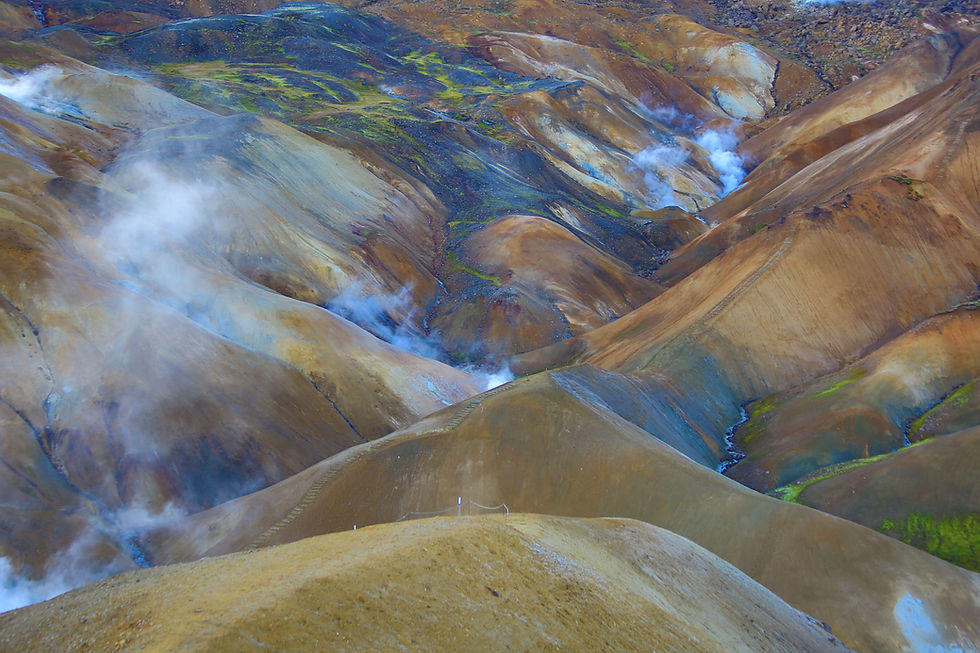Mount Saint Helens, Washington
- Jul 7, 2021
- 3 min read
Updated: Jan 3, 2023

More than 41 years had passed since Mount Saint Helens last erupted. The Plinian eruption of this stratovolcano not only killed 57 people but decimated swaths of forested land and wilderness. It's column of ash plume was recorded at staggering height of 80,000 feet! The mountain went from 9,677' to 8,363', releasing landslide debris equivalent to 1 million Olympic size pools.
Today, St Helens is unmistakable with its blown off north face creating an asymmetric mountain. Its devastation still visible today, more than 4 decades later, with its layers of ash and strewn trees across Spirit Lake. The surrounding area filled with volcanic geological features that look more like a nuclear blast. In fact, this pyroclastic eruption released more than 24 megatons of thermal energy, which is equivalent to 1600 times the size of the Hiroshima atomic bomb.

Through all this destruction, there is still something serene and surreal about this place. With Mount Adams in the distant background, the surrounding hills provide an almost scenic view of the lake - that is until you realize that the hills are missing trees and that the flotsam on the water are the actual trees.
We decided to visit Mount St Helens in a bit of a spur of the moment. The drive was a pretty straight forward 2.5 hours from Seattle. The remaining drive from Toledo was a leisurely paced traverse past the junction to Toutle along Spirit Lake Highway. There were many bridges along the way carrying us over the many tributaries of the Toutle River.
Once at the visitor center parking lot, it was clear skies and warm weather. Before us was the magnificent view of Mount St. Helens. We pulled up at the trailhead and made haste onto the trail towards Harry's ridge. Looking back we could see where most visitors ended their trip - just at the top of the Boundary Trail lookout above the visitor center.

At the start of the Boundary Trail, we had amazing views of St. Helens. The trail winded up the ridge, and we could see the road from which we arrived on.
Several of the trails along the main Boundary Trail, is named after Harry R. Truman; an American businessman, bootlegger, and prospector who lived in the area. He was 83 when St Helens claimed him as one of the 57 who died that day on May 18th, 1980.
The Boundary Trail was very well graded and full of wild flowers. It made for a pretty walk through the fields regardless of the devastating view. Underfoot, was pumice and ash, which made for a crunchy and at times dusty trail. Soon we came to a slide that crossed over down to the Devil's Elbow (lookout) and to Truman's Trail (down to the lahar flow). Here we caught the first glimpse of Spirit Lake.

Beyond this point, we climbed back up the side of Harry's Ridge through an open meadow. This area was green and if there were still ice, it would have been lush with water. Unfortunately, when we visited, there was a major heatwave in the northwest, and so all the snow had melted and the waters dried up. It made for a hot trek with little to no cover.
Soon we arrived at the junction to Harry's Ridge. From here it was a steady climb to the top of the ridge and back down to the end view point directly where Spirit Lake starts.
At this vantage point, we could see how Mount St. Helens' eruption carved the valley across to Spirit Lake, and how the lahar would have flowed down the mountain and into the Toutle River.
Geologically, there are some pretty interesting features in the area. For instance, at the end of Spirit Lake we can see large hummocks formed due to the water being pushed up by the pyroclastic flow.

Along the ridges, we can see the stumps of trees left behind when they were snapped off by the blast.

And in some cases, we can actually still see the trees strewn sideways, blown down from where they stood.

As it was late in the afternoon, we soon made our way back to the visitor center. The weather had turned and it was now cloudy and foggy. In a few moments what was expansive open views became obscured white out. Those arriving at this time would see nothing of Mount St Helens!
As we made it back, we managed to capture at least some life in this desolated place. A sign that revival was indeed at play.
In all, Mount St Helens turned out to be surprisingly interesting and a pretty good workout. There are many things to discover here, and to learn from what nature goes through geologically.



































Comments